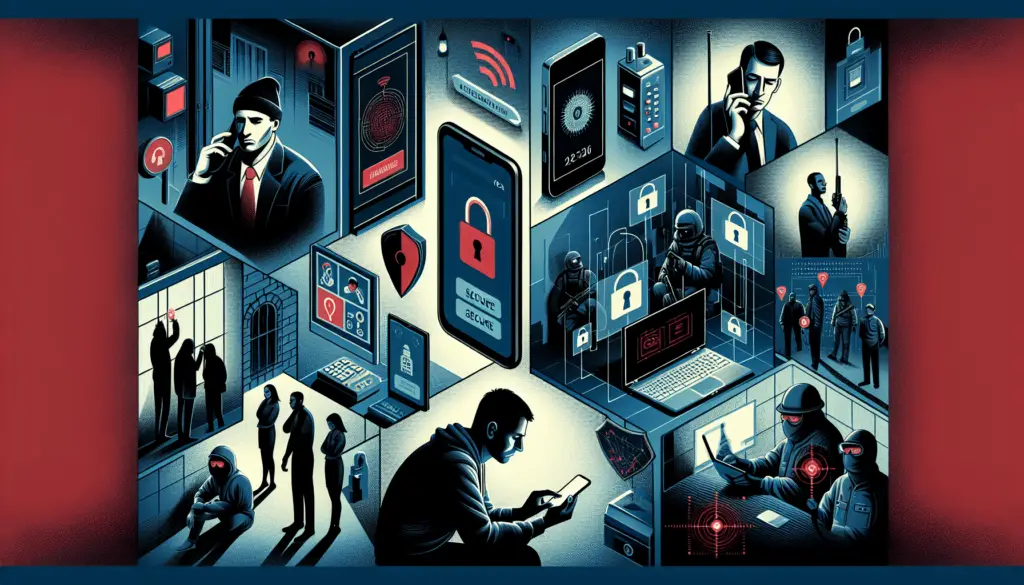In today’s increasingly digital world, communication plays a vital role in our everyday lives. However, when faced with a security threat, ensuring that our communication remains safe and secure becomes of utmost importance. From cyber attacks to physical dangers, this article will explore practical tips on how to navigate and communicate safely during a security threat. Stay tuned to learn how you can protect yourself and your loved ones in uncertain times.

Choose the Right Communication Method
In any security threat situation, the first step in safely communicating is to choose the right method of communication. Assess the situation at hand and consider the urgency of the matter. Is it a life-threatening emergency or a less urgent situation? This will help determine the appropriate communication method to use. Additionally, evaluate the risk level involved. Are there potential eavesdroppers or surveillance that could compromise your communication?
Stay Calm and Composed
Maintaining calm and composure during a security threat is crucial for effective and safe communication. It’s natural to feel anxious or scared, but it’s important to control your emotions as much as possible. Panic can cloud your judgment and hinder clear communication. Take deep breaths, focus on staying centered, and keep a clear mind. This will help you make better decisions and communicate more effectively.
Use Coded or Secret Messages
When faced with a security threat, using coded or secret messages can be an effective way to communicate without drawing attention or revealing sensitive information. Establish a pre-determined code with your trusted contacts, where certain words or phrases have alternative meanings. This way, even if someone intercepts your message, they won’t understand its true meaning. Additionally, consider using encryption or steganography, which involves hiding messages within other seemingly innocuous content.

Avoid Obvious Communication Methods
To ensure your communication remains discreet during a security threat, it’s important to avoid obvious communication methods that can be easily monitored. Public channels and smartphones should be avoided as they are more susceptible to interception. Instead, consider using encrypted messaging apps or secure communication devices. Also, exercise caution with social media platforms, as your messages and activities can easily be tracked and monitored.
Establish a Communication Plan
Having a well-established communication plan in place can make a significant difference during a security threat. Determine a designated meeting point where you and your trusted contacts can gather if separated. This can be a secure location or a pre-determined safe spot. Establish check-in times to ensure everyone’s safety and well-being. Assign responsibilities to each person involved, so everyone knows their role and what actions to take if communication is lost or compromised.
Use Non-Verbal Communication
Non-verbal communication can be a valuable tool in situations where verbal communication may not be possible or safe. Use hand signals to convey basic messages or directions. Develop a system of gestures with your trusted contacts so you can communicate more complex ideas. Additionally, utilize eye contact and body language to convey messages or silently communicate your intentions. Be aware of your surroundings and adapt your non-verbal communication accordingly.
Maintain Discretion
When communicating during a security threat, maintaining discretion is vital. Whisper or lower your voice when speaking, especially in public spaces or areas where potential eavesdropping may occur. Keep conversations brief and to the point to minimize the chances of others overhearing important information. Avoid drawing attention to yourself by speaking loudly or behaving conspicuously. Remember, the goal is to communicate effectively while remaining as inconspicuous as possible.
Be Aware of Surroundings
Being aware of your surroundings is essential for your safety and for effective communication during a security threat. Stay vigilant and pay attention to your environment at all times. Look for any signs of suspicious behavior or individuals who may pose a threat. Trust your instincts and if something feels off, take necessary precautions. Being proactive and alert can help you avoid potential dangers and communicate more securely.
Have Emergency Contacts
During a security threat, it’s crucial to have a list of emergency contacts readily available. Create a list of important phone numbers including local emergency services, such as the police or medical services. Include the contact information of trusted individuals who can provide assistance or support in case of an emergency. Share this list with your trusted contacts and keep a copy in a secure place. Having emergency contacts readily accessible can be a lifeline in times of crisis.
Practice Active Listening
When communicating during a security threat, it’s essential to practice active listening. Focus on the speaker and give them your full attention. Demonstrate understanding by nodding or providing non-verbal cues to show that you are engaged in the conversation. Ask clarifying questions if needed to ensure that you have correctly understood the information being conveyed. Active listening not only improves communication but also enhances situational awareness and helps to avoid misunderstandings.
In conclusion, safely communicating during a security threat requires careful consideration and preparation. By choosing the right communication method, staying calm and composed, using coded or secret messages, avoiding obvious communication methods, establishing a communication plan, utilizing non-verbal communication, maintaining discretion, being aware of surroundings, having emergency contacts, and practicing active listening, you can ensure effective and secure communication even in challenging situations. Remember, it’s important to prioritize your safety and the safety of others while communicating during a security threat. Stay alert, be prepared, and use these strategies to communicate confidently and securely when it matters most.
